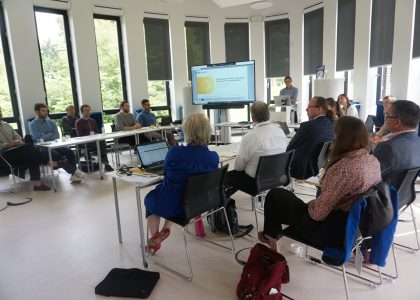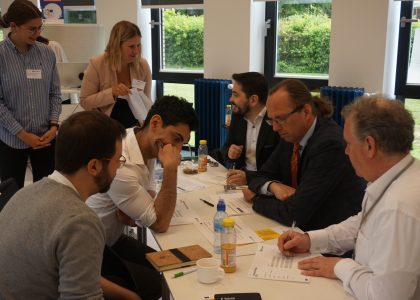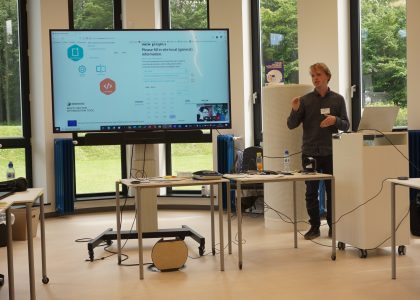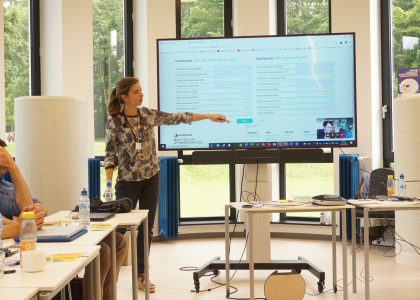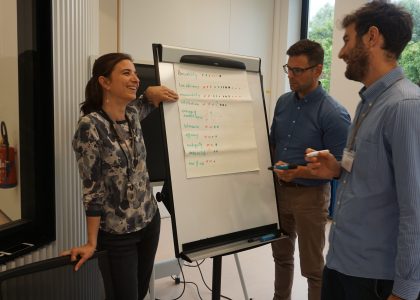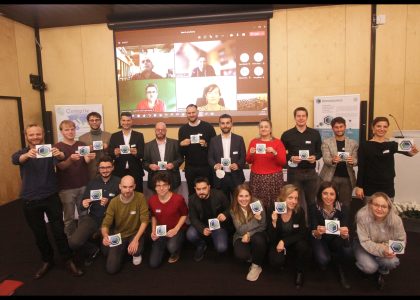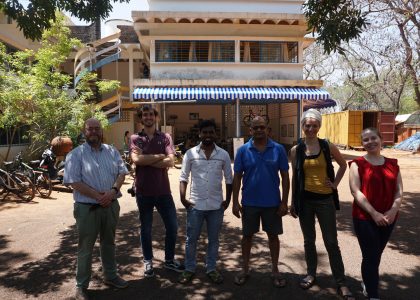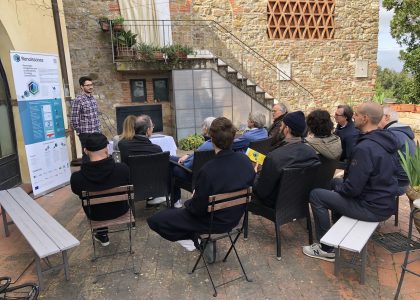by Nikolas Giampaolo and Rebecca Hueting
ESG feedback on the RENERGISE tool
In the past ESG meeting the Renergise tool has been officially launched. The basic concept of using this tool is to allow anyone to assess the basic costs and benefits that can result from the development of local energy systems. The tool is able to receive variable input values on environmental, technical and financial provisions and process all of these to calculate the corresponding expectations of the energy system created by the user. The results are presented in a simple and direct way to the user, who is able to compare different energy systems with each other, so that the required different investment costs and
benefits are clear and comparable.
The RENERGISE Multi-vector Optimization tool provides registered users the possibility to create, edit and compare hypothetical or actual data from local energy networks that might develop as new energy communities. Users provide input data and the RENERGISE tool will support decision making by calculating total electricity import and export from and to the grid, the self-consumption and self-sufficiency ratio and the total cost, net of investment and energy import costs. The RENERGISE tool aims at facilitating the growth of flexible networks, fostering the energy transition and creating a more resilient and balanced prosumer oriented system.
OPEN IN NEW TAB
User acceptance: usability workshop and ranking
During the meeting expert participants have been involved in a user acceptance exercise related with the usability of the Renergise tool. The evaluation feedback was collected through a usability questionnaire and an interactive session led by Rebecca Hueting (Deep Blue) and Julian Ruddick (Vrije Universiteit Brussels). During the session not only participants had the opportunity to see, operate and comment freely the tool functionalities and marketability potential, but they also ranked through dot voting the main aspects of the tool.
Each of the eight participants was asked to rank each usability aspect from 0 (very low) to 3 (very high).
The usability aspects assessed were the following:
1. Learnability: How easy is it to accomplish the desired tasks at first use?
2. Time efficiency: Once familiar with the tool, how quickly can the plan be performed?
3. Memorability: In your opinion, when returning to the tool after a period of not using it, how easily can proficiency be re-established?
4. Satisfaction: How pleasant or satisfying is the experience of using the tool?
5. Coverage of essential topics: do you think the tool is designed for all kinds of users, in a user-centred, safe and accessible way?
6. Coherence: Are the features offered coherent?
7. Efficacy: How clear are the results provided by the tool?
8. Ambiguity: Is the tool or parts of it ambiguous, i.e. open to more than one interpretation? (the lowest the better, results have been aligned with positive scale)
9. Universality: How universal is the tool (can be used by more kinds of users)?
10. Ease of use: How easy is it to use the tool?
The results collected are:
- Learnability 2
- Time efficiency 2,4
- Memorability 2
- Satisfaction 2
- Coverage of essential topics 1,8
- Coherence 1,8
- Efficacy 1,6
- Ambiguity 2
- Universality 1,7
- Ease of use 2,25
The overall usability score is 1.85 (60%), with the highest performance in time efficiency (80%) and ease of use (73%) and the lowest in efficacy (53%).
Conclusions
The main issues emerged during the open discussion concerned the ambiguity of the target audience (whose needs is the tools addressing?). A potential solution could be that of providing different complexity “levels” depending on the expertise of the user (early bird, advanced knowledge, professional/expert), to facilitate field completion and visualisation of results.
A second issue emerged concerned how results were presented: it was considered cool to have the option to see results in tables and in graphs, also with the possibility of choosing time granularity. Nevertheless, a combined view of both visualisation could help a more wholistic understanding and easier comparison of different energy system layout options.
The RENERGISE tool main ambition is that of being used both by non-experts with support towards a broader comprehension of the community potential and by energy experts evaluating more in detail collective energy systems and layouts. Trying to find the balanced trade-off between the opposite needs of such a wide basin of users might have affected its internal coherence and comprehensibility. The ultimate goal for RENERGiSE tool, is to facilitate the activities of the RENAISSANCE project, but also, to evolve throughout the course even further and be a potential computing tool for the future local energy systems and an enabling factor for the commercial engagement of citizens with the energy economy. Particularly, within the current operating framework and constraints imposed in the global energy market, the tool seems to be more relevant than ever.
Follow us:
